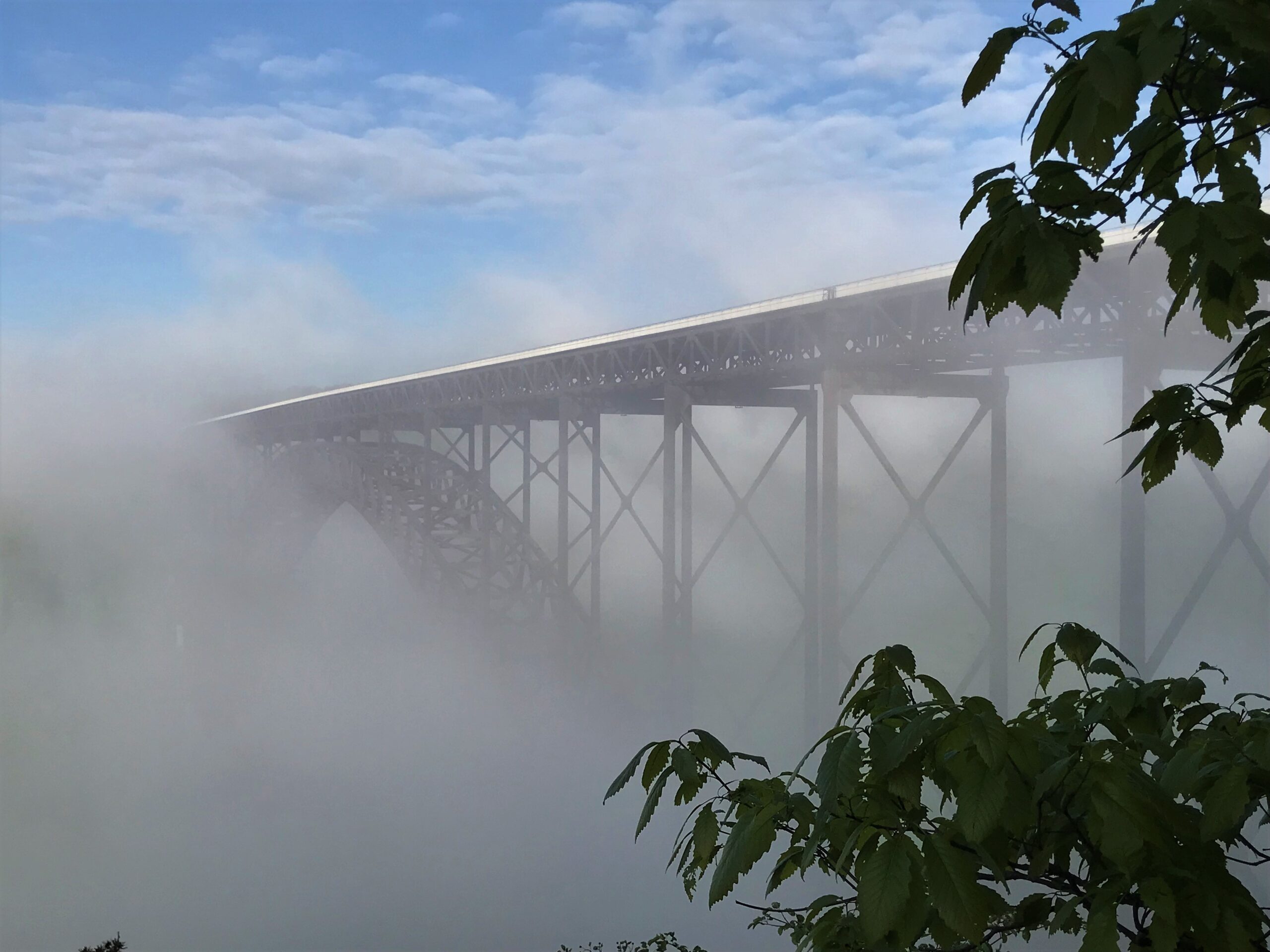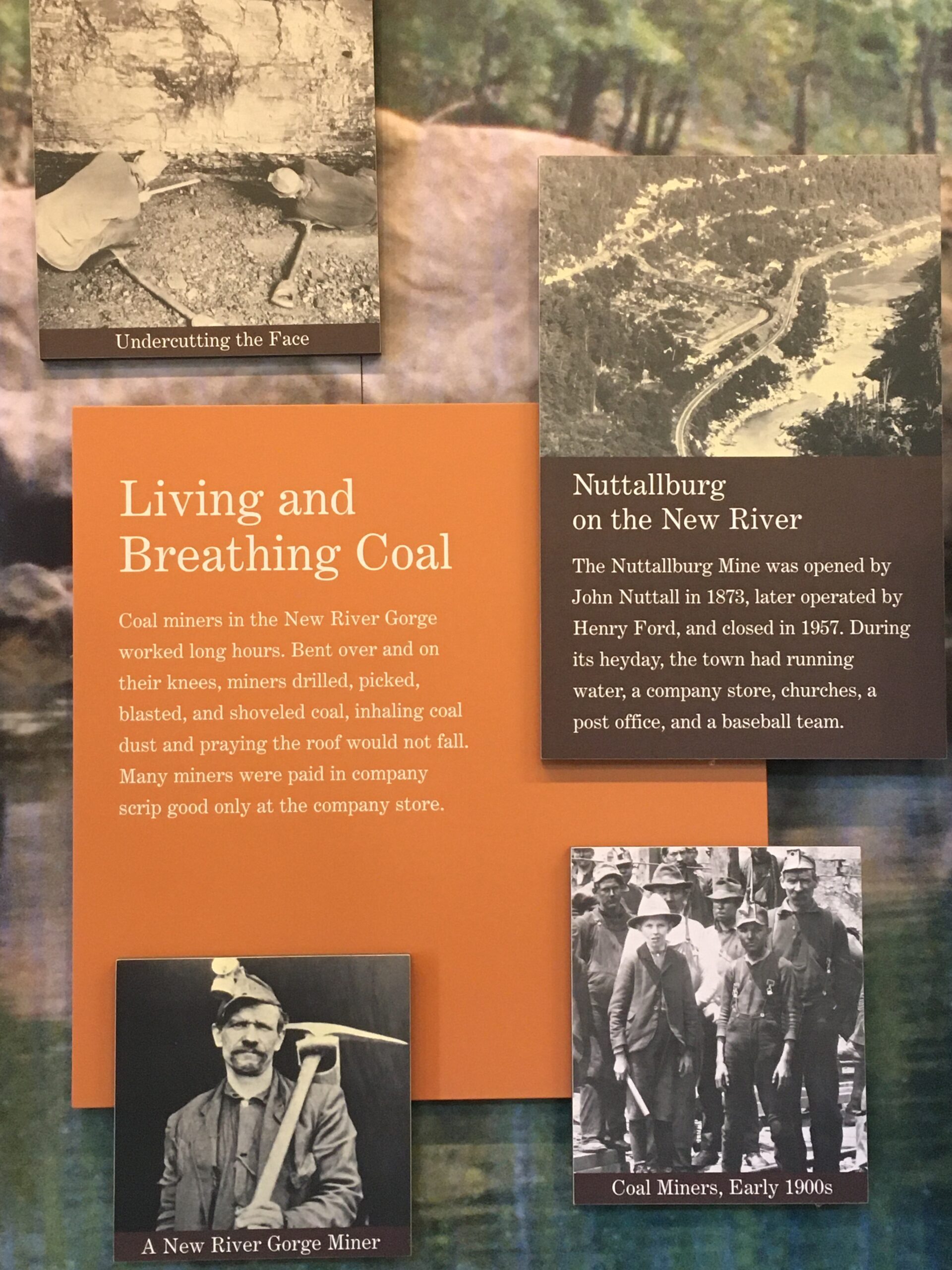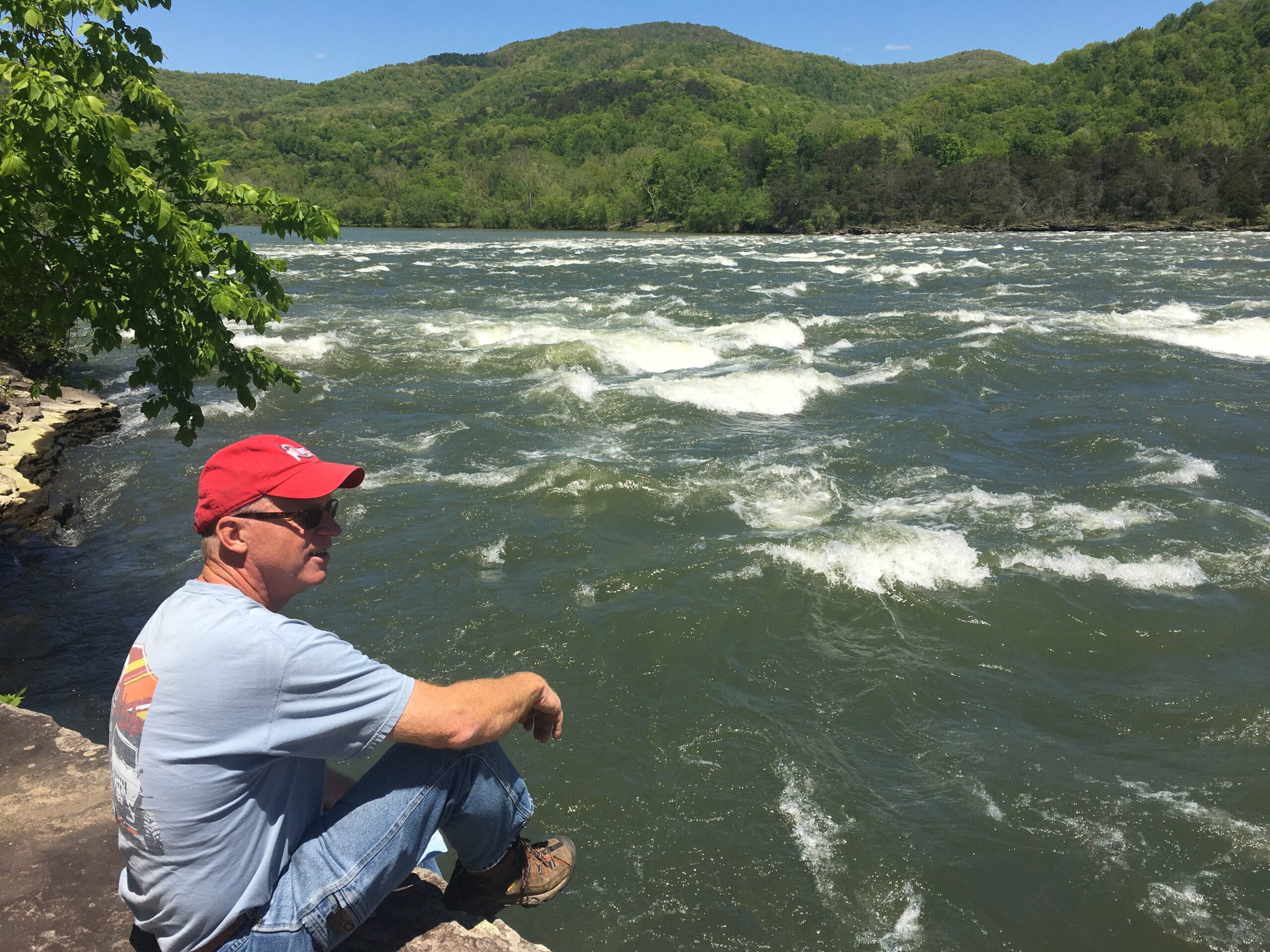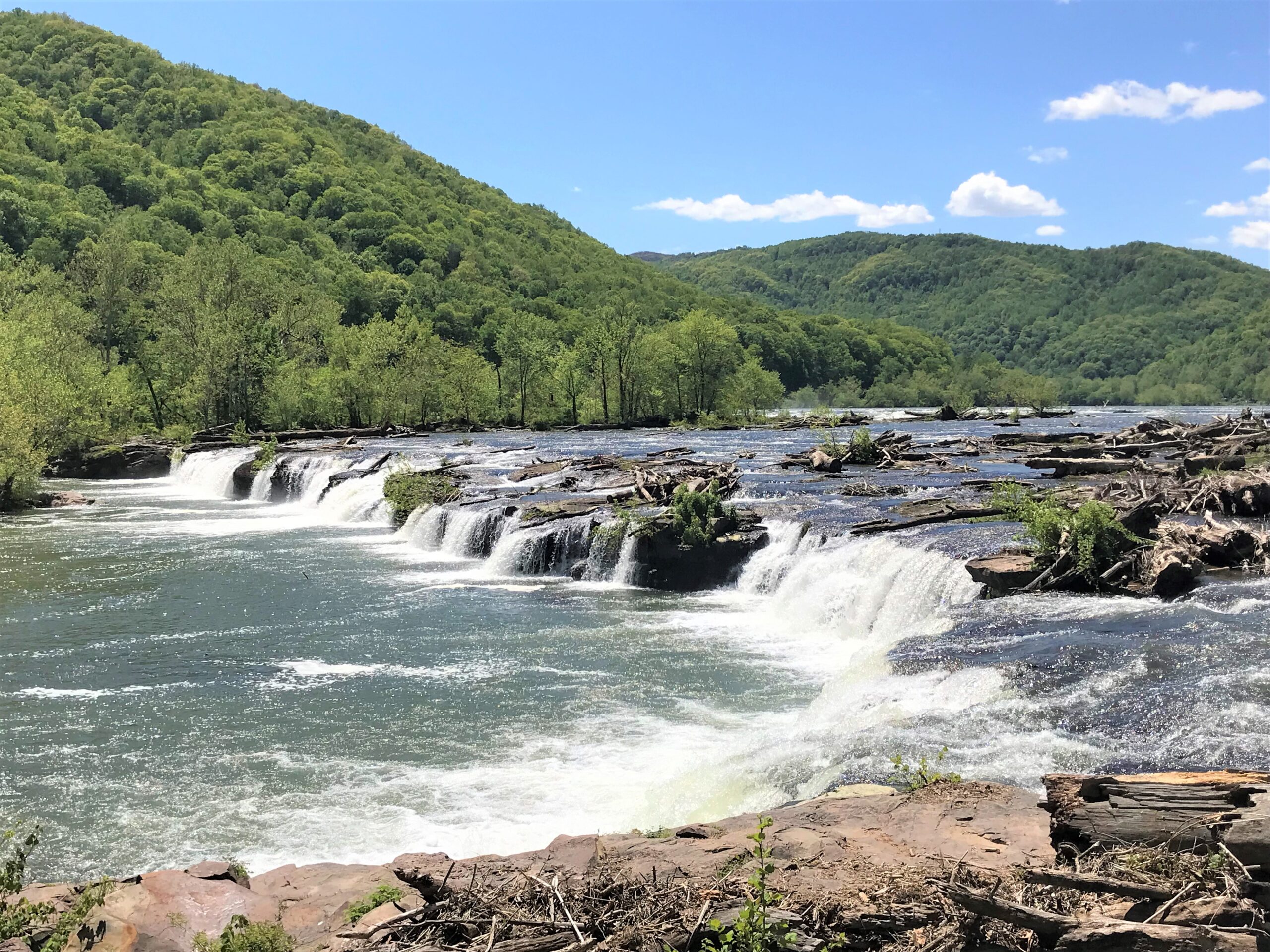Little Beaver State Park, Beaver, West Virginia
As we complete the beatitudes (or as I once called them “The Be Attitudes” 😊), I wanted to mention what I finally put together – – each of these, when followed, offer proof of our salvation. We who claim to be children of God are to exhibit changed lives because of Jesus, which includes being poor in spirit (humble before God), mourning over sin, demonstrating meekness or humbleness before God, having an intense hunger for righteousness, showing mercy to others, being pure in heart, living as peacemakers, and standing under persecution because of our love for Jesus.

For two days we hiked and drove around our newest National Park – The New River Gorge National Park and Preserve aka The River of Death. More on that later. We hiked nearly 50,000 steps – and I mean HARD steps, including stair steps (one trail included a mere 821 of them). This wasn’t a stroll along an asphalted or cement flat trail. This was true hiking. Mountain hiking. And it was exhausting, but fun and stunningly gorgeous! We understand why the West Virginia slogan is “Almost Heaven”.
The New River Gorge National Park and Preserve near Beckley, West Virginia protects and preserves 53 miles of the New River as well as 70,000 acres of the magnificent gorge this river has created. In the words found on the National Park website:
Established in 1978, New River Gorge National River was redesignated as New River Gorge National Park and Preserve in 2021. A rugged, whitewater river flowing northward through deep and spectacular canyons, the New River is actually among the oldest rivers on Earth. Here in southern West Virginia, the New River has carved and continues to carve the deepest and longest river gorge in the Appalachian Mountains.
Hiking along the many park trails, rafting the river, or biking along an old railroad grade, the visitor will be confronted with spectacular scenery that certainly makes this place worthy of being included in our national park system. However, the significance of this place goes well beyond the beautiful scenery. When looking out from Grandview, Diamond Point, Long Point, or one of the many other viewpoints in the park, we are actually looking at a globally significant forest containing the most diverse flora of any river gorge in the south and central Appalachian Mountains. The Appalachian Mountain forests are some of the oldest and most diverse ecosystems in the world. Here in southern West Virginia, the New River has sliced through the mountains, creating a mosaic of habitats: unfragmented forest, cliff and rimrock habitats, forest seeps and wetlands, and mature bottomland forests. These habitats provide a refuge for endangered mammals and rare birds and amphibians, including the endangered Virginia big-eared bat and Indiana bat and the Allegheny woodrat, a species of special concern in West Virginia and in decline throughout the eastern United States. The waters of the New River system contain a mosaic of hydrologic features and aquatic habitats that support a highly productive aquatic ecosystem that includes distinct populations of native fish, mussels, crayfish, and a broad array of other aquatic life, including rare amphibians, reptiles, birds, and mammals.Looking out from the many fantastic viewpoints in the park will also provide a glimpse into the unique cultural history of the New River Gorge area that contributes to the significance of this place. From almost any viewpoint in the park one will see the railroad tracks that opened this rugged and isolated land to the outside world in 1872. From Grandview one will see the rail yards at Quinnimont, where coal was first shipped from the gorge, and the piers of an old bridge which once connected the timber towns of Hamlet and Glade. From Diamond Point hikers will gaze down at the ruins of Kaymoor, an early New River coal mining town. In addition to the coal mines and company towns found throughout the gorge are the old railroad depots, rail yards, rail grades, railroad equipment, and associated towns, like Thurmond, that were developed to support the railroad. Also contributing to the area’s rich cultural history are surviving examples of subsistence farms, former community sites, homesteads, and other places in the park where the ancestors of families long associated with the New River lived and worked. Bits of coal along the tracks, rows of old decaying coke ovens, gaping mine openings in the hillsides, old rusted mine cars, and the gravestones of early pioneer families provide tangible reminders of the people who worked and lived here during the late 18th and 19th centuries, supplying the coal and lumber that helped fuel the industrialization of our nation.
Today, New River Gorge National Park and Preserve is renowned for its excellent recreational opportunities: whitewater rafting, canoeing, hiking, rock climbing, fishing, hunting, bird watching, camping, picnicking, biking, and just enjoying the solitude the natural world. The Lower Gorge of the New River is a premier whitewater rafting location with imposing rapids ranging in difficulty from Class III to Class V, many of them obstructed by large boulders which necessitate maneuvering in very powerful currents, crosscurrents, and hydraulics. Commercial outfitters conduct trips down the river from April through October. The upper part of the river offers somewhat less challenging class I to III rapids for whitewater canoeing.

Of course, many of you may not know about the Park itself, but you may have heard tell or seen the famous bridge there. Here’s what the NPS says about that:
When the New River Gorge Bridge was completed on October 22, 1977, a travel challenge was solved. The bridge reduced a 40-minute drive down narrow mountain roads and across one of North America’s oldest rivers to less than a minute. When it comes to road construction, mountains do pose a challenge. In the case of the New River Gorge Bridge, challenge was transformed into a work of structural art – the longest steel span in the western hemisphere and the third highest in the United States.
The New River Gorge Bridge is one of the most photographed places in West Virginia. The bridge was chosen to represent the state on the commemorative quarter released by the U.S. Mint in 2006. In 2013, the National Park Service listed the New River Gorge Bridge in the National Register of Historic Places as a significant historic resource.
Bridge Construction
The West Virginia Division of Highways chose the Michael Baker Company as the designer, and the construction contract was awarded to the American Bridge Division of U.S. Steel. In June 1974, the first steel was positioned over the gorge by trolleys running on three-inch diameter cables. The cables were strung 3,500 feet between two matching towers. Cor-ten steel, with a rust-like appearance that never needs painting, was used in construction.
The bridge spans a 3,030′ gorge and is 876′ tall. The arch is 1,700′. The bridge became the longest single span arch bridge in the World.
I found pictures on the National Park website taken during the construction of the bridge:

No one says how the cables managed to get from one side of the river to the other.

We were on that road and took a picture right where the base of the arch meets the tower!
You’ll see it later so keep this in mind.

I know there’s a net, but still…..

See the safety net?

I’ll bet this process was absolutely fascinating to watch!

With its 3030 foot wide gorge, 876 foot height and single 1700 foot arch span design, the New River Gorge Bridge would become the longest single span arch bridge in the World.
If you’d like more information on the bridge check out
History
While looking for a couple of construction pictures, I ran across this website. If you’d like to learn a tiny snippet of what life was like as a builder of this bridge, check out:
Our first outing, we were early enough to be blessed by heavy fog in the valley. While one might think this a hinderance, it was breathtaking in its own way and we’re glad we didn’t miss it!
The first day was the most difficult as far as exertion goes. The second was more relaxed and ran at a slower pace. Good thing! We could’ve spent another 4-5 days here to take it all in. Maybe next time . . .
Because not only am I a week behind, but we’re back home in Ohio for this post, I simply don’t have the time to share all the stunning pictures we took. In all actuality, it might have been easier to just add them all rather than trying to choose a few. 😊
One more thing I’d like to mention. Back to ‘The River of Death’ reference. In our BC lives (before children), we actually white-water rafted this fierce river with some family and friends. It was a blast, but I only say that because all of us survived. Thinking back, it’s truly a wonder we didn’t lose anyone!
First of all, you have the power of the river. Second (and one of two most important things), was the fact that we had no river guide in the back of the boat, meaning that Blaine (as the man in charge in the back) was supposed to tell us how to maneuver our boat around rocks and through gully washers. With his only experience thus far being piloting a canoe of two as we floated down a passive river in Canal Fulton, Ohio. Plus participating in one previous white-water trip down the Gauley river, which was a ton of fun and felt safe with our experienced pilot in the back calling out orders.
This time river guides were in separate kayaks calling out orders, their words battling the noise of the roaring river to reach the ears of those of us crazy enough to pay them to try to drown us.
I mentioned there were two important factors. The second was the fact that the life preservers we were given had no center strap between our legs. Now you may wonder what difference that could possibly make. I’ll tell you. Once you fall out of the boat and miraculously make your way to calmer waters, your fellow passengers are expected to drag you back into the relative safety of the boat by tugging on your life jacket. Take a guess what happens when there’s no strap. The life jacket pulls right off over their head! YIKES!!
And yes, several times we bounced right out of that boat! I think I remember that after one particular rapid, Blaine may have been the only one left inside!

Blaine’s brother, Brian is in front of me and his wife, Barb is beside him.
Did you notice that the only ones who seem to be enjoying ourselves are the girls? : )
At one point, a lady we didn’t know made her way to shore and stood there shaking and insisting that there was no way she was getting back in her boat. Another lady broke her ankle.We were blessed all of us survived.
Enjoy a few pictures from our two days here!

Look at that fog!

I took this from my window in the Jeep as we drove across. : )



The trains run about ever 45 minutes to an hour.




And we already hiked pretty far downhill on the dirt trail!
See the railcar tracks under the steps?
That’s what they used to take the workers and visitors down from the mountain to the mine.







Brad Paisley!
We never actually saw him, although we waited and watched a bit,
but we were told by several people on trails that he was in town filming for a promotional piece,
and since police cars were all around, we knew this had to be him.




Lots of curves, and narrow road, but most of it was wisely labeled ‘One Way’, so it was fun!
Bridge goes over the New River.


Just imagine being the guys who had to crawl around on that!
Remember that construction picture I told you to remember?
This is the place!
We now venture into Day 2.


You just have to be there to really appreciate the majesty!

It’s a bit cooler than yesterday! : )




He had some business to take care of.
What a splendid spot to do it!!!


I think it’s the most amazing man-made things we’ve ever seen!
If you look at the sign you can see how to build your own.
Wanna be the coolest Mom/Dad/Gma/Gpa/Aunt/Uncle ever?!?


The picture below is at an overlook of Sandstone Falls. We’ll get down there eventually. The rushing water is so loud you have to raise your voice a bit to talk, even way up here! The falls spans the river and is 1,500′ across. That’s five football fields! It drops 10-25′. Wouldn’t you think it would be the same all the way across?

There was still plenty of waterfalls and river to see though.

Had we known, this is where we would’ve lunched today!


Doesn’t look like much in the picture does it?
There’s so many branches, sticks and trees here, it’s a wonder the river isn’t dammed up.
Wonder if there are any plans to clean it up?


